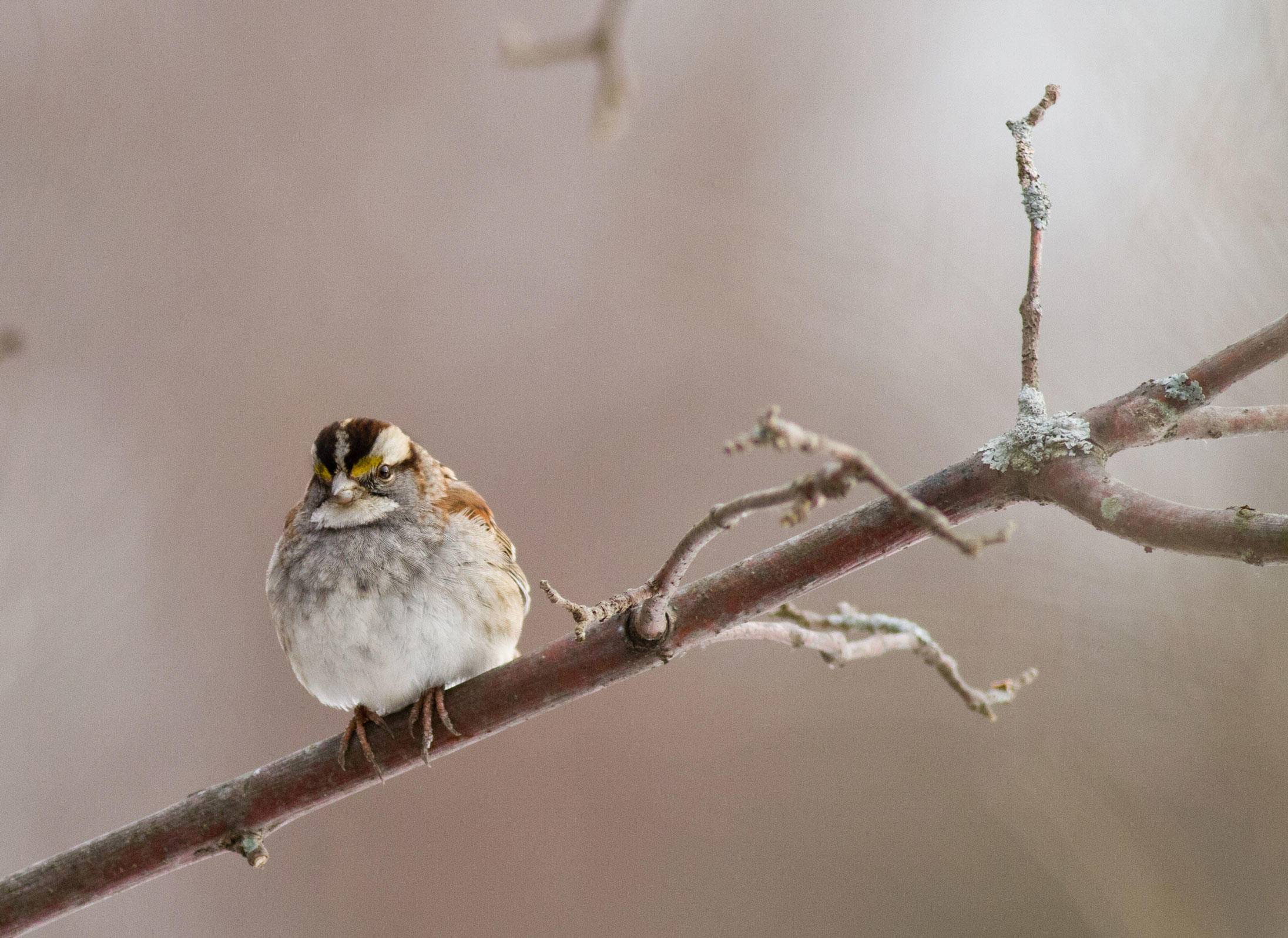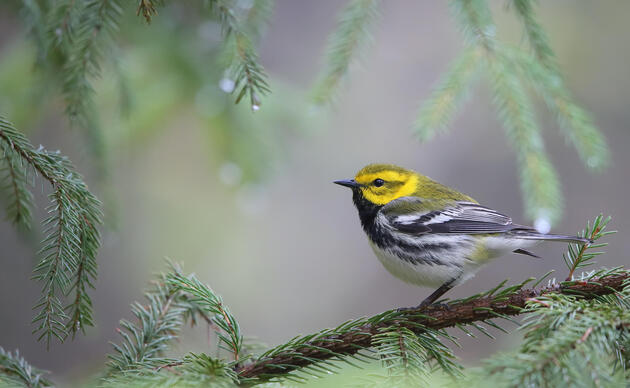Forest Management Goals
As part of the Foresters for the Birds project, Audubon Vermont has partnered with the VT Department of Forests, Parks, and Recreation, municipalities, forest stewardship organizations, and others to establish a network of demonstration forests in VT and NH that showcase excellent and innovative management that intentionally integrates timber and migratory songbird habitat. The Green Mountain Audubon Center in Huntington, VT serves as one of ten sites. In addition to offering tours, workshops, and service-learning opportunities at these sites, we are also collecting data on timber, habitat, and songbirds to better understand how the forest and birds respond to Silviculture with Birds in Mind management practices.
Forest management goals at the Green Mountain Audubon Center are to improve the future timber resource and breeding habitat for mature forest nesting birds by:
- Creating canopy gaps to stimulate growth in the understory where many birds nest
- Releasing crop trees
- Increasing the amount of down wood cover for foraging, drumming, and perching
- Maintaining current and recruiting future snags and cavity trees for nesting, foraging, and perching
- Maintaining vegetative diversity in all forest layers
This management may benefit priority migratory bird species like Blackburnian warbler, black-throated blue warbler, scarlet tanager, wood thrush, and eastern wood-pewee.
Climate Change: Impacts, Challenges, and Opportunities
Modeled climate change impacts to the forests will alter nesting habitat conditions for priority bird species. This is likely to affect to the bird species community, their nesting success, and overall incidence of birds currently characteristic of the region.
- Increases in non-native invasive plant species will likely decrease abundance of the critical insect food resource for birds during the nesting season, decrease nesting success due to increased predation, and increase abundance of lower quality fruit resources that are important to increased bird fitness prior to migration.
- Increased winter minimum temperatures and decreased probability of lower lethal temperatures will likely lead to range expansion and abundance of non-native insect pests such as hemlock wooly adelgid and emerald ash borer, resulting in decreases in native tree species diversity and subsequently bird species diversity.
- Increased frequency and intensity of extreme weather events will result in larger and more frequent natural disturbances affecting the forest. As a result young forest, early-successional habitat structure may become more abundant on the landscape further promoting the spread of non-native invasive plants and decreasing habitat structure for mature forest nesting songbirds.
Despite climate change, there is a significant opportunity for bird conservation. Northern New England is at the core breeding range many bird species. For example, the black-throated blue warbler has nearly 1/3 of its global breeding population in the region. Although climate change models show decreased species habitat in the southern part of its breeding range, the Northeast is likely to continue to provide suitable habitat. This only increases the importance of the Northeast to the global conservation of this species and others like it.
Adaptation Actions
A 39-acre timber harvest in winter 2012-13 utilized three treatments from the document Silviculture with Birds in Mind: expanding-gap group shelterwood, crop-tree release with canopy gap formation, and single-tree and small-group selection. These treatments are aimed at enhancing species diversity and structure to improve near term (0-15 year) habitat and timber quality as well as and long-term (50+ year) resilience:
- Maintain or improve the ability of forest to resist pests and pathogens by retaining/releasing vigorous trees and increasing structural and species diversity.
- Prevent the establishment of invasive plants with pretreatment removal and post treatment monitoring.
- Manage herbivory by keeping tops unlopped and retaining coarse woody material
- Protect forest from severe disturbance and prepare for disturbances by enhancing residual vigor and growth and promoting regeneration throughout the area.
- Maintain and enhance species and structural diversity by implementing a variety of silvicultural treatments across the harvest area; promoting age and structural diversity; and retaining biological legacies.
We are monitoring changes to the timber resource, habitat structure, and bird community. Baseline pre-harvest vegetation and bird surveys were conducted, and future surveys will show the implications for managing forests with birds in mind.
More Information
Nancy Patch, VT Department of Forests, Parks, and Recreation: nancy.patch@state.vt.us
Steve Hagenbuch, Audubon Vermont: shagenbuch@audubon.org
How you can help, right now
Donate to Audubon
Help secure a future for birds at risk from climate change, habitat loss and other threats. Your support will power our science, education, advocacy and on-the-ground conservation efforts.
Visit Audubon
It's always a good time to visit the Audubon Center. Trails are open to the public year-round. Visit us daily from dawn until dusk! Donations are appreciated.
Events
Adults, preschoolers, foresters, photographers, sugarmakers and families will all find opportunities to connect with nature.





